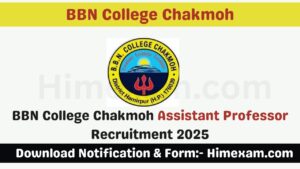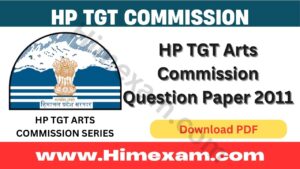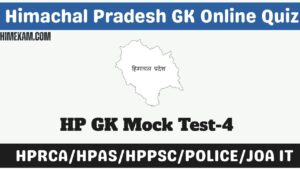Table of Contents
ToggleSolved HPSSC Opthalmic Officer(Allopathy) Post Code-804 Question Paper 2020 Set-2
||Solved HPSSC Opthalmic Officer(Allopathy) Post Code-804 Question Paper 2020 Set-2||Solved HPSSSB Hamirpur Opthalmic Officer(Allopathy) Post Code-804 Previous Year Question Paper 2020 Set-2 Answer Key Pdf||
61. When a visible light falls on mirror it is
(A) Refracted (B) Reflected (C) Absorbed (D) All of these
62. Focal length of the concave mirror is
(A) equal to its radius of curvature
(B) half of its radius of curvature
(C) less than radius of curvature
(D) more than radius of curvature
63. Image formed by a convex lens may be
(A) Real (B) Inverted (C) Virtual (D) All of these
64. In Snellen’s chart, parts of letters form a visual angle at nodal point of varying distance
(A) 5 (B) 5 min (C) 1 (D) 1 min
65. Which is not the angle along optical axis with other axis of
(A) Angle Alpha (B) Angle Kappa (C) Angle Beta (D) Angle Gamma
66. In indirect ophthalmoscopy magnification of fundus with +13 D lens is about
(A) 2 times (B) 3 times (C) 5 times (D) 10 times
67. Normal refractive power of an emmatropic eye is about
(A) 40D (B) 45D (C) 60D (D) 65D
68. An aphakic vision has the following features except
(A) Image magnification
(B) Pin cushion distortion
(C) Preservation of accommodation
(D) Roving scotoma
69. Examination at 1 metre distance in retinoscopy
(A) Requires a concave mirror of 25 cm focal length
(B) Gives a rough idea of type of refractive error
(C) Helps in localising the site of opacities
(D) All of these
70. Indirect Ophthalmoscopy
(A) is done with a concave mirror of 25 cm focal length
(B) a condensing lens of +13 D is used
(C) is done in a dark room
(D) All of these
71. Peripheral field of vision on nasal side is about
(A) 60 (B) 55 (C) 75 (D) 100
72. Central 30 of field can best be charted on
(A) Projection perimeter (B) Lister perimeter (C) Confrontation perimetery (D) Bjerrum’s screen
73. In Snellen’s chart for distance vision, which is not true ?
(A) Each individual letter subtend an angle of 5 min at the nodal point of the eye from the distance shown by the numerical written under each line.
(B) Each component part of the letter subtend 1 min at the nodal point of the eye.
(C) The chart is kept at a distance of 6 metres.
(D) The chart is kept at a distance of 20 metres.
74. Photo-opthalmia is caused by
(A) Beta rays (B) X-rays (C) Infrared rays (D) Ultra-violet rays
75. Which one of the following vitamin deficiency causes corneal ulceration ?
(A) Vit-A (B) Vit-C (C) Riboflavin (D) Vit-D
76. An eye in which parallel rays of light after refraction meet at retina without use of accommodation is
(A) Hypermetropic eye (B) Emmetropic eye (C) Myopic eye (D) Ametropic eye
77. The distance between the center of two pupil is
(A) Pupillary Axis (B) I.P.D. (C) Optic Axis (D) Geometric Axis
78. In Hypermetropia, which statement is not true ?
(A) It is normal upto three dioptres in a new born
(B) Should never be fully corrected
(C) Can lead to convergent squint in children
(D) Is corrected by convex lenses
79. In astigmatism, which statement is not true ?
(A) Is with the rule when horizontal meridian of cornea is flatter than vertical
(B) Of irregular variety cannot be corrected by cylindrical lenses
(C) Of myopic eye causes maximum eye strain
(D) Is called oblique when two chief meridia are at right angles but away from horizontal and vertical
80. The visual axis is the line joining the nodal point of the eye and fovea
(A) True (B) False (C) Partly true (D) None of these
81. Exophoria is commonly associated with Hypermetropia.
(A) True (B) False (C) Partly true (D) None of these
82. Ciliary muscles are Hypertrophied in
(A) Presbyopia (B) Hypermetropia (C) Myopia (D) Astigmatism
83. Looking up and to the right is called
(A) Dextroversion (B) Levoversion (C) Dextroelevation (D) Dextrodepression
84. Limitation of movement in the direction of action of paralysed muscle is seen in
(A) Concomitant Squint (B) Paralytic Squint (C) Both (A) and (B) (D) None of these
85. Intorsion and Extortion occur in
(A) Oblique Axis (B) Horizontal Axis (C) Anteroposterior Axis (D) Vertical Axis
86. While doing a cover test – On placing the cover the uncovered eye undergoes an abduction movement
(A) Esophoria (B) Exotropia (C) Esotropia (D) Exophoria
87. Esophoria is most commonly associated with
(A) Hypermetropia (B) Myopia (C) Astigmatism (D) Presbyopia
88. A squint which appears only after removal of the stimulus of infusion (as by covering an eye) is called Heterotropia
(A) True (B) False (C) Partly true (D) None of these
89. A squint in which motor part of neuromuscular control is defective, is called a concomitant squint
(A) True (B) False (C) Partly true (D) None of these
90. In case of paralytic squint diplopia is more marked in the direction of action of paralysed muscle
(A) True (B) False (C) Partly true (D) None of these
91. In case of paralytic squint, the patient holds his head so that his face is turned in the direction of action of the paralysed muscle
(A) True (B) False (C) Partly true (D) None of these
92. Which of the following statement is false as regards to paralytic squint ?
(A) Limitations of ocular movement
(B) Diplopia is present
(C) False image is seen by paralysed eye
(D) Primary deviation is greater than secondary deviation
93. Which of the following lenses has a spherical equivalent of –3.25 ?
(A) –3.00 = +6.00 180 (B) –1.00 = –4.50 90 (C) –4.00 = –4.00 90 (D) –2.00 = –5.50 80
94. What should you do ?
(A) Add more minus sphere (B) Take away plus sphere (C) Add more plus sphere (D) Add minus cylinder
95. The longest acting cycloplegic agent is
(A) Eucatropine (B) Homatropine (C) Atropine (D) Cyclopentolate
96. The “Jack in the Box” phenomenon is commonly seen in
(A) High myopes (B) Myopes with bi focal (C) High hypermetropes (D) Aphakes with glasses ‘
97. During accommodation all the following changes occur except
(A) Pupil contracts
(B) Anterior chamber shallows
(C) Lens becomes thinner
(D) Anterior and posterior surface of the lens become convex
98. In accommodation a change in which of the following structure is most directly responsible for functional accommodation ?
(A) Anterior lens capsule
(B) Posterior lens capsule
(C) Lens position
(D) Iris
99. The operation of which instrument is based on one of the Purkinje-Sanson images ?
(A) Indirect ophthalmoscope (B) Retinoscope (C) Keratometer (D) Slit lamp
100. All of the following will tend to seek early help for presbyopic symptoms except
(A) Watchmaker (B) Hypermetrope (C) Myope (D) Contact lens corrected myope
101. A lensometer measures the
(A) Vertex power of lens (B) True power of lens (C) Equivalent power of lens (D) Front power of lens
102. All the following are true of prisms except that
(A) the angle of incident light will help to determine the amount of deviation
(B) the apical angle will help to determine the amount of deviation
(C) they may provide some refractive power
(D) the index of refraction of a prism will play a role in the amount of deviation
103. Base curves of lenses can be checked with
(A) Lensometer (B) Neutralizing lens (C) Retinoscope (D) Geneva lens measure
104. Which of the following K readings are “with the rule” ?
(A) 43.0/44.0 at 90 (B) 44.0/44.0 at 180 (C) 44.0/46.0 at 180 (D) 42.0/46.0 at 120
105. If one were to examine the general population for corneal astigmatism, one would most likely find (A) against the rule astigmatism
(B) with the rule astigmatism
(C) irregular astigmatism
(D) oblique astigmatism
106. With regard to the cornea all the following pairs are correctly matched except
(A) more convex/steeper (B) less convex/flatter (C) steeper/more power (D) more power/hypermetropic
107. A myope will experience
(A) magnification with glasses
(B) less minification with contact lenses than with glasses
(C) magnification with contact lenses
(D) less minification with glasses than with contact lenses
108. Irregular corneal astigmatism can best be corrected with the use of
(A) Spectacles (B) Corrected curve spectacles (C) A Galilean telescope (D) Contact lens
109. An ideal cycloplegic agent should do all the following except
(A) Be rapidly effective
(B) Cause no adverse reaction
(C) Cause wide dilatation of the pupil associated with cycloplegia
(D) Permit prompt recovery to normal accommodation
110. A 50 year old male has just been given a new reading add. He is most likely complaint about his new glasses will be
(A) increased magnification
(B) reduced range of near vision
(C) increased by focal jump
(D) increased prism deviation
111. The posterior chamber of eye is a space situated between
(A) Posterior surface of cornea and anterior surface of iris
(B) Posterior surface of iris and anterior surface of lens
(C) Posterior surface of lens and anterior surface of vitreous
(D) Posterior surface of lens and retina
112. The lens is suspended
(A) with the help of iris
(B) with the help of zonules
(C) with the help of ligament of lock wood
(D) All of these
113. An inverted image is formed in
(A) Direct ophthalmoscopy
(B) Indirect ophthalmoscopy
(C) Both (A) and (B)
(D) None of these
114. The movement of the shadow is in the same direction as the movement of mirror in retinoscopy with a plane mirror
(A) Hypermetropia (B) Myopia more than one dioptr (C) Astigmatism (D) Myopia of one dioptre
115. Retinoscopy with a concave mirror from 1 metre, there is no movement of the shadow in
(A) Astigmatism (B) Myopia more than one dioptre (C) Hypermetropia (D) Myopia of one dioptre
116. A maddox rod placed with its axis at 90 degree produces a horizontal line
(A) True (B) False (C) Partly true (D) None of these
117. The angle of anterior chamber is examined by using a gonioscope along with a slit lamp
(A) True (B) False (C) Partly true (D) None of these
118. The blind spot lies at 12 degrees temporal to the fixation point
(A) True (B) False (C) Partly true (D) None of these
119. Retina is examined with a retinoscope
(A) True (B) False (C) Partly true (D) None of these
120. Confrontation method of field testing
(A) The examiner sits at a distance of 1 mtr from the patient
(B) Gives an idea of central fields of vision
(C) Gives an idea of peripheral fields of vision
(D) None of these
||Solved HPSSC Opthalmic Officer(Allopathy) Post Code-804 Question Paper 2020 Set-2||Solved HPSSSB Hamirpur Opthalmic Officer(Allopathy) Post Code-804 Previous Year Question Paper 2020 Set-2 Answer Key Pdf||
Join Our Telegram Group :- Himexam

%20Post%20Code-804%20Question%20Paper%202020%20Set-2.jpg)







